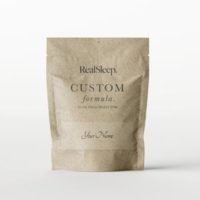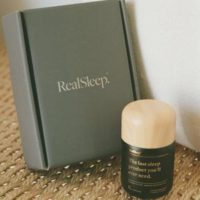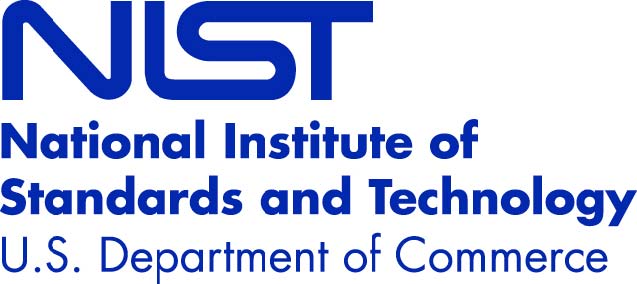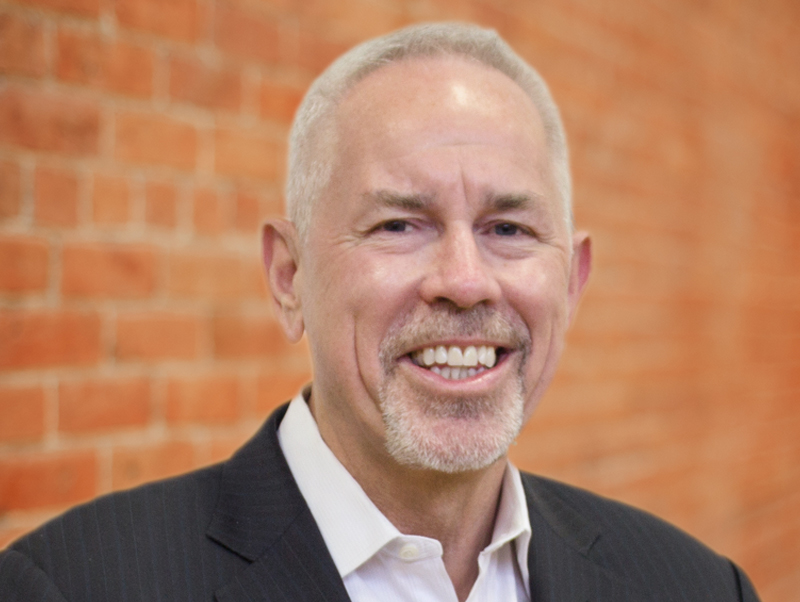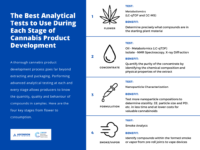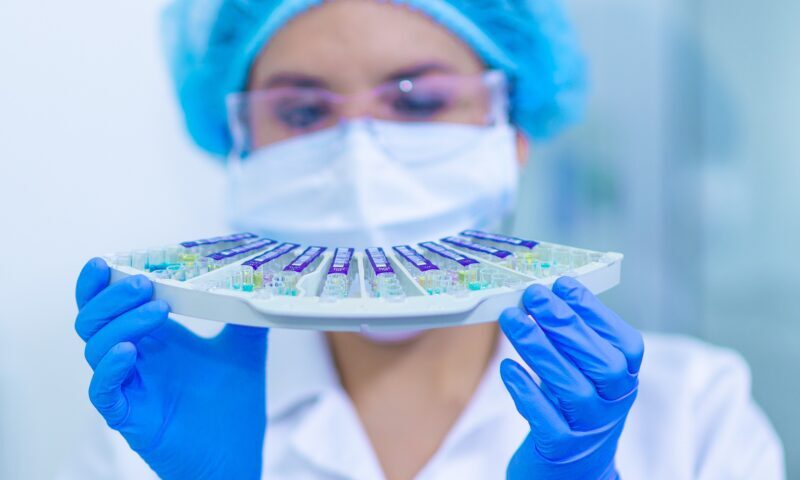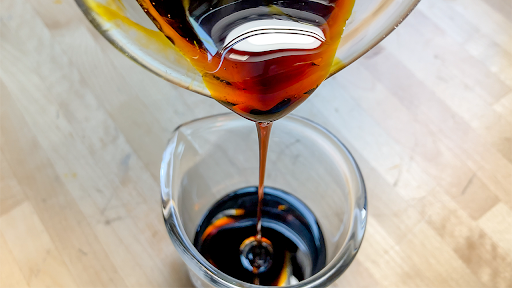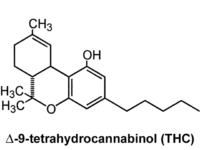Russell is the CEO of NES Technology Holdings, a technology development and marketing company that operates Vapor Distilled and LifeTonic Brands. NES Technology Holdings has invented a technology portfolio of more than 160 granted and pending patents that cover inventions across several high-value industries, including cannabis, beverage, fragrance and nutraceuticals. The company is currently in license acquisition diligence processes with 7 of world’s 10 largest fragrance companies and has received a joint venture offer from a $3 billion fragrance company to produce perfumes with its extraction technology. It is also launching ionized cannabis beverage products that provide effects as quickly as alcohol in Nevada and Colorado this fall.
Vapor Distilled invented and commercialized an evaporative extraction process with 40 international patents granted and pending that, along with CO2 extraction, is one of only two fundamentally new extraction processes invented in the last 50 years. Instead of using solvents or hydrocarbons to extract oils from plants, evaporative extraction directly evaporates essential oils from plants and condenses the evaporated compounds into an extract. The process takes less than two seconds to complete and extracts higher levels of volatile terpenes than existing extraction methods. Vapor Distilled has built a fleet of commercial-scale extraction machines and has supplied some of the cannabis industry’s largest brands. The company is currently licensing its evaporative extraction technology within the perfume industry and is marketing an aroma hop extract to replace the dry hopping step when making beer.
LifeTonic invented a drug delivery technology with 56 patents pending and granted, that turns oil-based plant compounds like CBD and THC into electrically charged cannabinoid ions that dissolve completely in water without emulsifiers or additives. When cannabinoids are ionized, absorption is significantly enhanced and their effects can be felt in minutes. The effects of a LifeTonic ionized CBD beverage can be felt by most people in less than 5 minutes, whereas the effects of a LifeTonic ionized THC beverage can be felt by most people in less than 8 minutes. For reference, typical onset times for cannabis beverages are 30 minutes or longer. LifeTonic beverage technology will allow cannabis beverages to work as quickly as alcohol, enabling cannabis to become a social drink.

We spoke with Russell Thomas, CEO of Vapor Distilled and LifeTonic about his cannabinoid evaporation process and rapid onset beverage technologies. Thomas is a career entrepreneur and inventor with 21 years of experience inventing and protecting intellectual property. Russell’s team has generated more than 160 granted and pending patents. Prior to entering the cannabis industry, Thomas worked in the cleantech industry.
Aaron Green: How did you get involved in the cannabis industry?
Russell Thomas: I came to the cannabis industry from the cleantech industry where I worked on technologies that improved the fuel economy of vehicles. I saw opportunities in the cannabis industry to improve cannabis extraction, which was one of the most important supply chain verticals in cannabis. Every product, from edibles to beverages and vape products, requires a cannabis extract. Any product that needs to be accurately dosed requires an extract. The old way of making edible products with cannabis butter was simply not viable as the industry matured, and most people were rapidly moving away from smoking cannabis and embracing vape products. Even with the entire industry almost completely dependent on extraction, no fundamental innovation was occurring. The primary ways that cannabis was being extracted were chemically intensive. The cleaner methods, such as CO2 extraction, were slow and expensive for terpene recovery. I saw this as a great opportunity to provide a better solution within a primary funnel of the cannabis supply chain.
We commercialized an extraction technology that evaporates cannabinoids directly from plant material in the form of vapor, and then recondenses that vapor back into an essential oil. The entire process takes less than two seconds to complete and preserves fragile terpenes. That technology, called Evaporative Extraction, is the foundation of Vapor Distilled.
Green: What timeframe was that roughly?
Thomas: We capitalized our company in 2015 and began selling wholesale extracts in 2017.
Green: Can you talk more about the evaporative extraction process?
Thomas: Our process works in a similar way to a cannabis vaporizer, but on a massive scale. Our extract is literally recondensed cannabis vapor. In one step, we extract, refine, and activate cannabinoids. On one end, plant material goes in the machine, and on the other end, extract and depleted plant material comes out. Our total extraction time is less than two seconds if you measure the time from when the plant material goes into the extractor and when the extract is condensed.

A continuous feed of dry plant material is introduced into a heated air stream. The air stream pneumatically conveys the plant material through a series of turbulent, heated evaporation chambers. Upon entering the evaporation chambers, volatile plant compounds are instantaneously distilled from the plant material. A centrifugal separator removes the depleted plant material from the air stream. The air stream is rapidly cooled, causing the volatile plant compounds to condense into an essential oil.
We achieve nearly total activation of THCA to THC simultaneously during extraction and, on average, we extract approximately two to four times more terpenes than a conventional extraction process. The cannabis industry is rampant with exaggeration about terpenes, but we are the only cannabis company negotiating a joint venture with a $3 billion fragrance company to produce perfumes, and I think that says a lot about our process.
Green: Is the extract coming out then as an oil?
Thomas: Our extract comes out of our machines as a fully-activated, high-terpene content, full spectrum oil. Unlike the THC crude that emerges from other processes, our extract requires no further distillation, activation or refinement. You can put it straight into a product.
Green: How about terpene recovery?
Thomas: This is by far what we do best. We excel with the recovery terpenes and volatile compounds from plant material. From day one, we noticed that our evaporative extraction process yields about two to four times more terpenes by mass compared to traditional extraction methods.
While we started as a cannabis company, we recently received a compelling joint venture offer from a $3 billion fragrance company to produce perfume products with our technology. We are also under NDA with 7 of the world’s 10 largest fragrance companies to complete diligence processes to license our extraction technology.
 As part of our licensing diligence process, we are performing paid fragrance extraction research for three multi-billion-dollar fragrance companies. Our evaporative extracted fragrance extracts are presenting a broader and more complete range of volatile compounds compared reference samples. We are also seeing substantially improved yield of volatile fragrance compounds. Combined, this gives us the advantage of being able to produce more extract at a lower cost, while also producing a superior product. This combination is how licensees can take market share away from any fragrance company that does not have access to our technology, and it is why we are seeing so much rapid traction in this area.
As part of our licensing diligence process, we are performing paid fragrance extraction research for three multi-billion-dollar fragrance companies. Our evaporative extracted fragrance extracts are presenting a broader and more complete range of volatile compounds compared reference samples. We are also seeing substantially improved yield of volatile fragrance compounds. Combined, this gives us the advantage of being able to produce more extract at a lower cost, while also producing a superior product. This combination is how licensees can take market share away from any fragrance company that does not have access to our technology, and it is why we are seeing so much rapid traction in this area.
We have also extracted hops with our technology. If you’ve ever smelled a traditional hops resin, it smells good, but the smell doesn’t fill the room. If you put just a drop of our hops extract on any surface, the entire room will smell strongly of a premium IPA beer. It’s so potent you don’t want to get it on your hands or clothes because you will smell like beer for hours. It’s powerful and wonderful stuff!
Green: What is your business model?
Thomas: At our core, we are a technology development and licensing company. We first identify what we believe to be critical verticals and bottlenecks in high-value industries, then we develop and patent highly differentiated and disruptive technology solutions that we believe exist nowhere else. We then demonstrate both market fit and viability at scale through proof-of-concept sales of branded and high-profile, white-labeled products produced with our unique technologies. Finally, we systematically license and exit the various portions our IP portfolio though the orchestration of highly competitive bidding processes that promote both defensive and strategic acquisitions of our technologies. We are currently at the final phase of our model with licensing our extraction technology, and we are receiving offers as part of a competitive bidding process.
Green: Okay, let’s change gears here and start talking more about LifeTonic and your cannabinoid ionization technology. Can you talk high level about the onset times of cannabinoids in different matrices and media?
Thomas: Through LifeTonic, we invented 56 international patents granted and pending cannabinoid ionization technology that compresses the normal onset time of cannabis beverages from 30 minutes down to just a few minutes. Our cannabinoid ionization technology can also be used as a rapid onset vape alternative when sold in a breath spray format. We are currently selling hemp-based versions of these products through LifeTonic.com, and we are bringing THC versions of these products to market in Nevada and Colorado this fall and winter under the brand name LifeTonic.
All conventional and even nano-emulsified cannabis edibles and beverages take a long time to work. A cannabis chocolate can take 45 minutes to two hours before the effects kick in. Cannabis gummies are faster, but it still takes half an hour to 45 minutes to feel the effects. The very best nano-emulsified cannabis beverages take about a half an hour to work on average, if you are lucky. That long of a time delay effectively eliminates the social aspect of consuming cannabis, so most people instead choose to vaporize or smoke cannabis.
If you look at the largest investments that have been made across cannabis, some of the most prominent have been made by alcohol companies. Constellation Brands invested nearly $4 billion into Canopy Growth, with a mission to find an alternative to alcohol in cannabis. Molson Coors has partnered with Hexo and AB InBev has partnered with Tilray, both with that same mission. Even after all this effort and investment, cannabis beverages represent just a sliver of the market because current cannabis-based beverages take too long to work. The fastest ones on the market, on average, take around a half hour to kick in.
Imagine going to a bar and knowing that every time you got a shot of tequila or a shot of whiskey it’s going to take thirty minutes or more for the effects to even begin to kick in. That would be terrible. That would be the end of social drinking. Unfortunately, that is how a conventional cannabis beverage works.
You can’t really get a social drinking experience with cannabis yet, so most people vape it because it’s fast. But a lot of people don’t want to smoke something; in fact, they don’t want to inhale at all. So, we saw beverages as a huge opportunity. How do we make cannabis beverages work as fast as alcohol? That’s what our ionization technology delivers. From all the people we’ve surveyed – hundreds of people – they say that they reliably feel an onset within about seven to eight minutes with our technology. That is just about as fast as a shot of tequila or whiskey.
“With our partners, we will be featuring LifeTonic beverage products on tap in a cannabis cocktail lounge right off the Las Vegas strip, where social consumption rules are welcoming.”What we’ve done is very different from available nanoemulsion technologies. All those technologies try to mix oil and water, and oil and water don’t mix. In a nanoemulsion, you mix cannabis, a carrier oil, an edible detergent and water, and then you run it all through an ultrasonic homogenizer that breaks the cannabinoids and oil into microscopic droplets suspended in water. There are a lot of styles of nanoemulsions, from spray-dried nanoemulsions to liquid liposomal encapsulations, and they all confer certain absorption benefits when compared to straight-up oil absorption. But still, even the microscopic oil droplets suspended in water are quite large compared to what we have done, and still take quite a long time to digest.
We looked at the cannabis molecule and we said, “You know what? If we can put a strong negative charge on it, if we can ionize it, then we can make it behave more like a dissolvable salt instead of an oil.” When we treat it this way, the cannabis molecule dissolves completely in the water without emulsifiers or additives. When something is dissolved, there is no nano-emulsion droplet size. It is single molecules dissolved water. A single ionized cannabinoid molecule is about 1,000 times smaller than an average nano-emulsion droplet – and this greatly enhances absorption. The onset speed of ionized cannabinoids compared to nanoemulsions is measurable as just a few minutes instead of a half hour or more.
We have 56 granted and pending patents on LifeTonic’s ionization technology. We can ionize THC, CBD, CBG and CBD – most cannabinoids are compatible. There are also several herbal products that are compatible with our ionization technology, like the curcuminoids in turmeric, which are normally very hard to get into water. We can also ionize the eugenol that is in cloves. Ionized eugenol is an intoxicant, so we have big plans for alcohol alternatives outside of cannabis.
We’re using this technology to enter the Nevada cannabis market with one of the largest dispensary chains and cannabis product manufacturers in Nevada. With our partners, we will be featuring LifeTonic beverage products on tap in a cannabis cocktail lounge right off the Las Vegas strip, where social consumption rules are welcoming. We’ll craft every kind of cocktail you can imagine, only without alcohol. All these beverages will work in a matter of minutes to provide the first true social drinking experience with cannabis. After you enjoy a beverage, you may purchase a package of ionized THC beverage powder sachets in the cannabis cocktail lounge or at any of the dispensaries within our distribution network. You can pour the powder into any beverage, and it becomes a friendly, fast-acting THC beverage that will get you high, but not leave you with a hangover. We will also be selling a breath-spray format that works almost as quickly as vaping.
Green: What kind of validation studies have you done?
Thomas: We have conducted several broad market studies for our ionized products and almost all people report a profound onset within a few minutes. We have not completed a formalized clinical trial, but we are closing a major funding round that will allow us to do so. We plan to begin controlled pre-clinical trials focused mainly on ionized CBD because it’s far easier to get FDA approval for clinical trials on CBD than for THC. Our studies will monitor a couple dozen volunteers with a functional MRI and watch the change in the brain using our oral spray and beverage products compared against a standard CBD tincture control. We know that we’re going to see fast action because everybody who uses it says that a feeling develops in minutes.
Green: What geographies are you active in and exploring?
Thomas: CBD and hemp products from our extraction technology have been sold in every US state and parts of Europe. Additionally, hemp-based CBD and CBG versions of our ionized products and ionized turmeric products have been sold in several states through our LifeTonic.com, our ecommerce site. We have also sold white labeled versions of our ionized products through partner brands. We will be launching THC versions of our ionized products with our partners Nevada this fall. We expect THC versions to also be available in Colorado this winter.
Green: So, you are creating the powders on site?
Thomas: Yes. We manufacture ionized CBD, CBG, eugenol and turmeric beverage powders on site. We also manufacture and fast acting ionized sprays. These products are sold through our own retail site and we white label for other brands. Per our long-term licensing strategy, these sales establish market viability through sales. Selling products and establishing market viability prior to licensing significantly increases the value of our licenses and exits. It’s very important to answer the question: Do people buy it and do people love it? So far, we like the feedback!
On the THC side, we manufacture ionized products through partners in each cannabis state that we enter. We manufacture the ionizing base here in Colorado, then we ship it to other states where our partners add the THC and package it in LifeTonic-branded packaging. The analogy is that we sell a proprietary Coca-Cola formula without the caffeine, then our partners add the caffeine and bottle it in Coca-Cola branded bottles. In this way, we ensure that the hardest part of our process is controlled house to ensure consistency and quality across all states. It also allows us to be a non-plant touching business, since we only sold upstream base products that did not contain THC. We pick the best manufacturing and distribution partner in each cannabis state and grow from there.
Green: What’s the one thing you’re most interested in learning about?
Thomas: Increasing the bioavailability of cannabis. I have been most passionate about making cannabis work as quickly as alcohol and giving people an alternative to inhaling it through smoking or vaping. That’s definitely what we’ve been most excited about as a company.
Green: Okay, great. That concludes the interview!
Thomas: Thank you Aaron!











